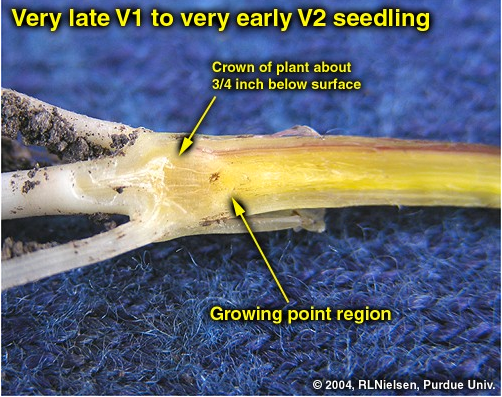Recovery from early season damage to corn is strongly dependent on the health of the main (apical) growing point region following the damage.
There is something about 30 mph winds and sand/grit/soil blasting across corn fields at seedling height that makes one curious about the ability of corn to recover from early season damage. The same can be said following a thunderstorm accompanied by strong winds and damaging hail (Nielsen, 2015). Whenever corn is damaged early in the growing season, growers are sometimes faced with the decision of whether or not to replant the field.
One of the most important, and most difficult, steps in making a replant decision is estimating the surviving plant population in the field. Corn is remarkably resilient to aboveground damage early in the season, yet growers often underestimate the ability of corn to recover from such damage. Consequently, much of the replanting that occurs each year is a waste of money and effort. Use the worksheet in my replant publication (AY-264-W) to estimate yield and dollar returns to corn replanting.
The health and condition of the corn plant’s growing point (apical meristem) plays a major role in determining whether a damaged corn plant will recover or not. A plant damaged aboveground but with a healthy, undamaged growing point will usually survive. However, damage to the growing point area will either kill the plant or severely stunt its recovery.
Click to continue reading the rest of the article.



